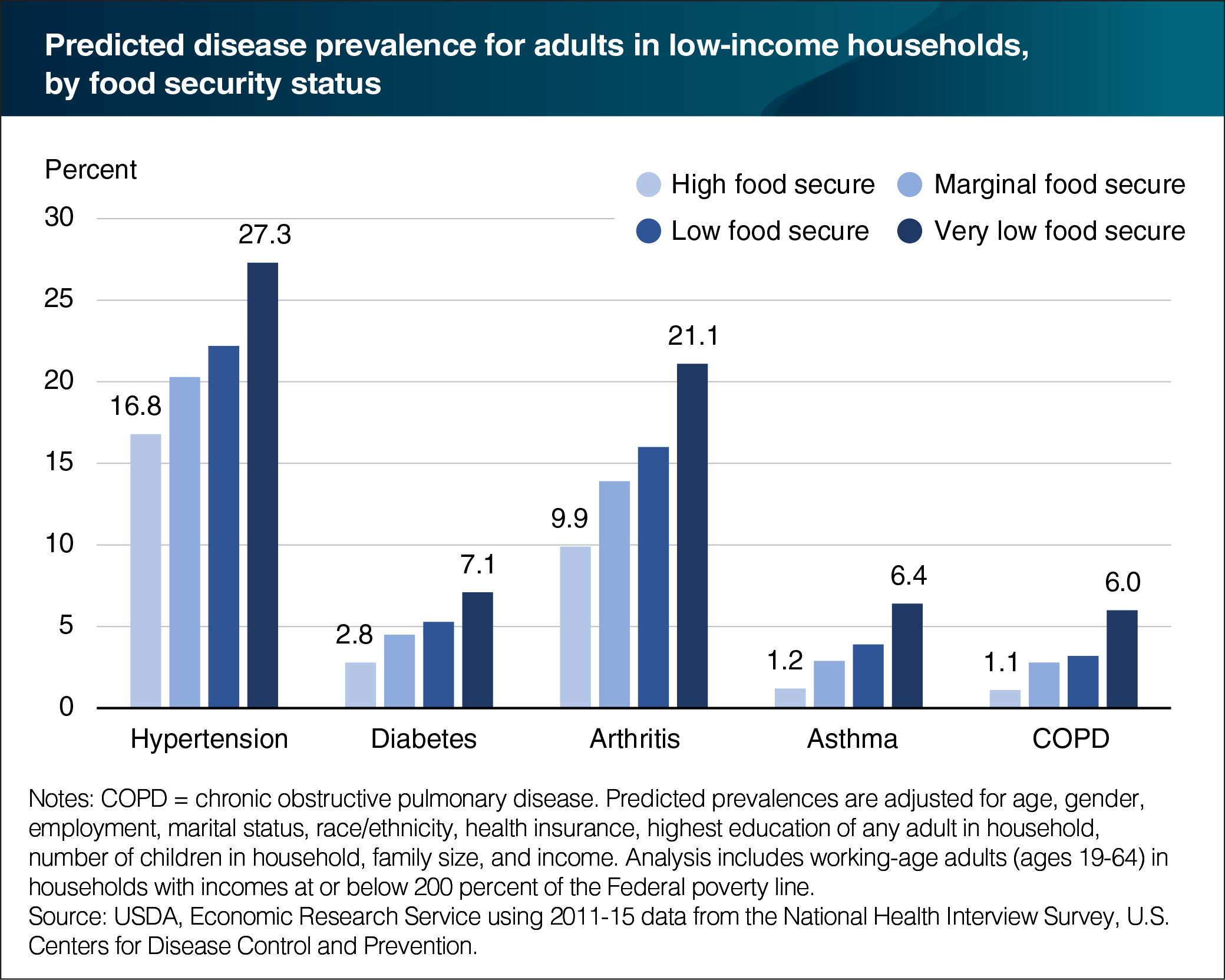Likelihood of low-income adults having a chronic disease increases as food security worsens
- by Christian A. Gregory and Alisha Coleman-Jensen
- 10/4/2017

ERS researchers recently used health, demographic, and food security information from the U.S. Centers for Disease Control and Prevention’s National Health Interview Survey to examine the relationship between 10 chronic diseases in low-income working-age adults and the food security status of their households. The researchers controlled for a variety of household and individual characteristics that may be associated with health—such as income, health insurance, and marital status—to get a clearer picture of the strength of the association between food security status and health. In all cases, the likelihood of having the particular health condition increased as household food security worsened. Among the 5 most common of the 10 chronic diseases examined, predicted illness prevalences were 4.3 to 11.2 percentage points higher for low-income adults ages 19-64 in very low food secure households (eating patterns of one or more household members were disrupted and food intake was reduced) compared with those in high food secure households (households had no difficulty consistently obtaining adequate food). This chart appears in "Adults in Households With More Severe Food Insecurity Are More Likely To Have a Chronic Disease" in the October 2017 issue of ERS’s Amber Waves magazine.

